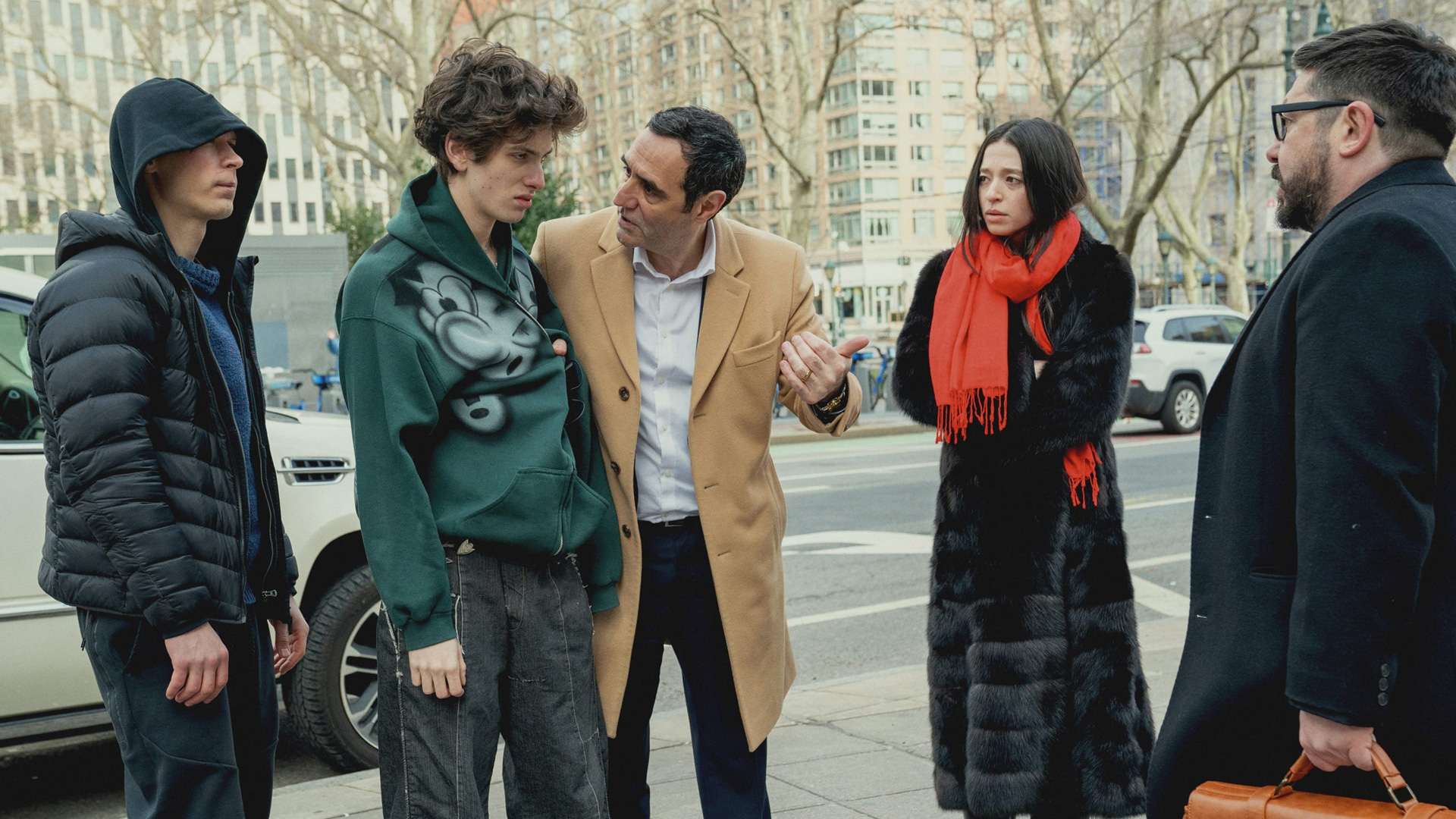Sean Baker on his year of stress making Anora
Sean Baker tells us about making Anora, learning to be a healthy director, editing chronologically, and great vomit.

Sean Baker talks to Flicks about his hit film Anora, casting Mikey Madison, learning to be a healthy director, his unique approach to editing, and one particular vomit scene.
It’s been a heck of a year for writer-director Sean Baker, having scored the Palme d’Or for his latest film Anora as well as a rave review from us and some recent Golden Globe nominations. The film follows a sex worker (Mikey Madison) chasing her Cinderella story by marrying a young Russian oligarch (Mark Eydelshteyn) in Vegas, a whirlwind week that blows up in their faces once word gets out to the lad’s parents.
Madison’s been confidently predicted to be in the running for Best Lead Actress at next year’s Academy Awards. Chatting over Zoom, I ask Baker, who casts his own films, how difficult it was finding the right person to play Annie (AKA Anora). “It was actually quite easy,” he assures. “When I saw her in Once Upon a Time in Hollywood, I was blown away. She stole the last 15 minutes of that movie.
“When we were moving forward with Anora, it just happened to be that my wife (Samantha Quan, also a producer on the film) and I went out to see 2022’s Scream opening weekend. We were sitting in the theatre going, ‘That’s her. She’s our Annie.’ As simple as that. She showed intensity in both and the ability to scream in both.” The second they walked out the cinema, they set up a meeting with her agent.
Not only does Baker cast his own films, he edits them too. I ask if he has his editor’s cap on while he’s directing on set. “You have to,” he answers. “I’m looking out for myself in post. I’ve learned a lot of lessons [in] every film. I kick myself as an editor, angry at the director side of me for not getting enough coverage or not getting that certain angle.
“Especially with something like the home invasion scene—that was scripted as real time, so there couldn’t be any continuity errors. I had to figure out the flow, the timing, the pacing of it before the editing room. There’s a lot of information to get across but it also [has] to hold the audience’s attention for a whole 28 minutes. You have to give them the intrigue, the comedy, the logic.
“I always consider my editing to be my third stage of writing: I write the screenplay, then there’s actual production rewriting to make things make sense, and then postproduction is the ultimate rewriting because that’s when you’re really finding it and finalizing it. Different sections will play longer or shorter than originally intended, but that’s when you’re hopefully as objective as possible.”

Despite his wealth of experience and massive success, Baker is still learning a lot about filmmaking. “There’s a lot of pressure when you’re making films,” he elaborates. “You always want to make your film better than your last and sometimes you beat yourself up. For months on end, I was living in stress to the point where I had psychosomatic pain and everything. I have to figure out how to manage my own neurosis and stress.
“I know everybody deals with it, but when you’re concentrating it into 35 days of shooting, you go gray. I lost 20 pounds. I’m already pretty thin but I got gaunt. It’s not a healthy lifestyle. I’m still trying to figure out how to be a healthy director.”

I assume he was referring largely to the on-set stress of filmmaking and suggest that the editor’s room makes for a low-stress environment. “Unfortunately, not with me,” Baker chuckles. “I use my mind even more. Thank God I’ve had my support system: Samantha, my wife and producer, and my dog here, Bunsen, usually sitting right behind me.” He lifts Bunsen to the camera to confirm that he is, indeed, a calming little cutie.
“But [editing’s] a difficult time. You can’t go back in time. You’re stuck with what you got and I edit in order. I don’t do an assemble cut. I guess it’s unique. The more editors I talk to, the more I realise that most people do an assemble cut—they see the entire thing and whittle it down. But not me.

“First, I distance myself from the project for at least for three to four months—I’ve been lucky to have that privilege—and then I go back in. Hopefully I have distanced myself enough where I forgot what I’ve shot. I edit in order: so I do one scene, polish it, move on to the next scene. That’s polishing not only in terms of the perfect take and figuring out how it’s cut, but even sound design. It’s polished before I move on because I like to see the film grow. I’m seeing it play out so it helped me with the flow and everything.
“That’s all to say, you don’t know whether you have a good movie or not until the last day of editing. So for a whole year, I’m living in stress, a whole year of not knowing whether or not I have a good movie on my hands. And that’s not a good way of living.”
At this point, I feel oblige to ask: “You’re okay though now, right? Like, after winning the Palme d’Or and stuff?”
“Yes, yes, yes, thank God,” Baker jovially confirms. “Back at the gym. I’m doing the gym every day. I’m eating, I’m sleeping. So all good.”

Before ending our call, I praise the Palme d’Or-winning filmmaker for Anora’s key vomit scene and try to coax Baker into revealing how he pulled it off such a realistic-looking chunder. “I truly appreciate that,” he replies. “I’ve had vomit in every one of my movies and up until 2012’s Starlet, I had my actors take a vomit inducing syrup called ipecac, which used to be available over the counter. Now it’s no longer available so I’ve had to figure out ways of faking it. And so this was faked…”
Baker pauses, reconsidering what I was asking of him. “But why should I? No, I can’t break the fourth wall. I can’t give that away. But let’s say it is faked. It’s an oatmeal substance that was being pumped somehow, and that’s all I’m going to tell.”
THIS INTERVIEW HAS BEEN EDITED FOR BREVITY AND CLARITY
























